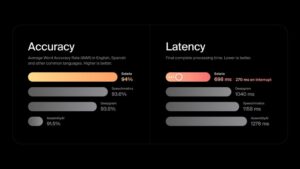The AI You’re Interacting With Could Be Operated by a Person in the Philippines

The Truth Behind AI: The Human Element
Introduction to AI Technology
Artificial Intelligence (AI) has rapidly evolved over the last few years. Many people commonly assume that they are interacting with sophisticated algorithms when they use AI-driven services. However, a deeper investigation reveals that, at times, these interactions may involve real humans, especially in customer service and content generation. This article explores the surprising integration of human involvement in AI applications.
The Human Touch Behind AI Responses
What is AI?
AI refers to computer systems designed to simulate human intelligence. These systems can learn, reason, and perform tasks that usually require human intelligence, such as understanding natural language and recognizing images.
Mixing Humans with AI Technology
While many AI applications are highly automated, some rely on human operators to improve accuracy and service quality. Companies frequently employ workers, often located in regions like the Philippines, to handle tasks that AI struggles with, such as:
- Interpreting complex queries
- Providing nuanced customer support
- Expanding context for communication
This blend of human intuition and machine efficiency can enhance customer satisfaction and resolve inquiries that might stump a fully automated system.
Reasons for Human Involvement in AI
1. Overcoming Limitations of AI
AI systems often face challenges in understanding sarcasm, emotions, or culturally specific references. Real human agents can navigate these complexities, ensuring that customer interactions are meaningful and effective.
2. Quality Control
When companies initially deploy AI systems to handle customer queries, they may find that responses lack personalization or accuracy. By employing human “editors,” companies can validate the reliability of AI responses, ensuring they meet quality standards.
3. Learning and Improvement
Human agents also assist in training AI models. By feeding the AI system with valuable data derived from real interactions, these workers help refine algorithms to foster better learning and adaptability in the future.
Real-World Applications
Customer Service
Many companies have turned to blended models of AI and human support for customer service. For instance, chatbots often handle straightforward questions, while trained customer service representatives step in for more intricate issues.
Content Creation
In the realm of content creation, some companies use AI tools to generate basic articles or social media posts. However, human writers frequently review, edit, and enrich this content to make it engaging and coherent. By doing so, they ensure the final product resonates well with readers.
Market Research
AI can gather and analyze large data sets quickly, but it may lack the ability to interpret the nuances behind trends. Human analysts are employed to provide insights and contextual understanding that AI might miss, informing strategic decisions in businesses.
The Impact on Employment
Job Opportunities in the Philippines
The use of humans in AI-related tasks has created job opportunities, especially in countries like the Philippines, where skilled workers are often more cost-effective. These roles can range from technical support to content moderation.
Need for Enhanced Skills
As AI technology continues to advance, there is a growing demand for workers who can bridge the gap between humans and machines. Skills such as data analysis, critical thinking, and emotional intelligence are becoming increasingly vital in this evolving landscape.
Ethical Considerations
Transparency
Consumers should be aware when interacting with AI systems that may involve human operators. Transparency is crucial for building trust, as users should know who (or what) they’re dealing with.
Fair Treatment
It is vital for companies utilizing such models to ensure fair treatment of their human workforce. Providing decent wages and working conditions can contribute to a more sustainable and ethical approach to integrating human support in AI systems.
By embracing a partnership between AI technology and human workers, businesses are not just enhancing their operational efficiency but also ensuring that they address the needs and expectations of their clients effectively.






